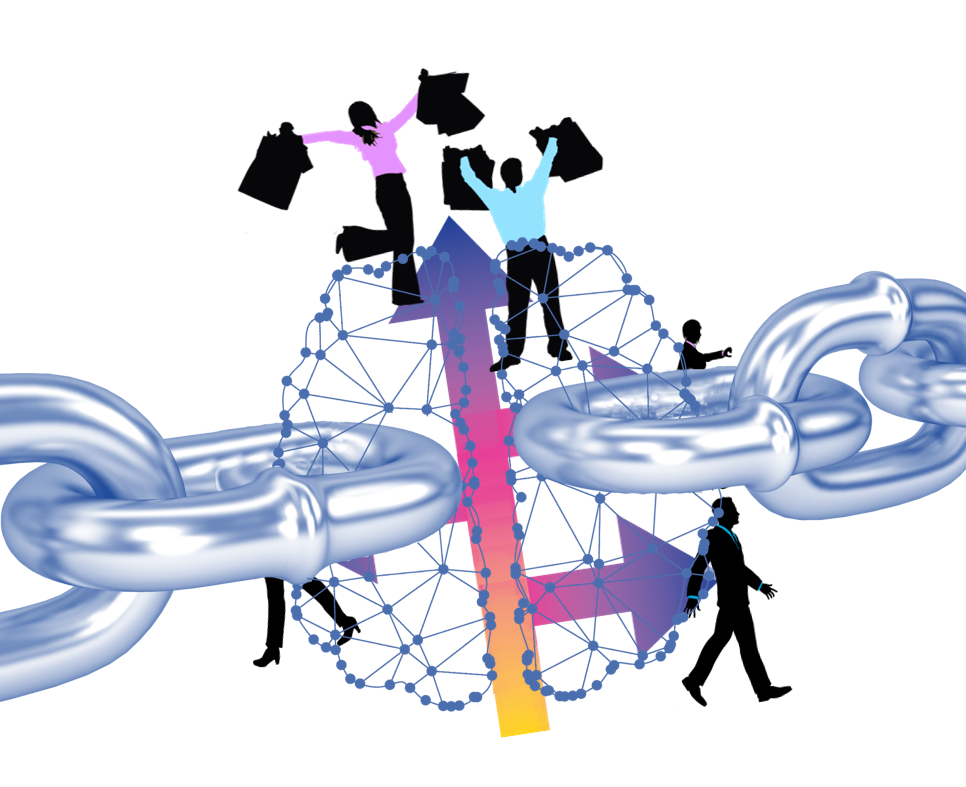The world of commerce has changed dramatically over the past couple of decades. Consumers shop differently and companies know more about consumer behavior. John Mabe writes, “Consumer behavior has changed dramatically over the last ten years due in large part to Amazon and the Smartphone. Quite simply, eCommerce has made it easier and faster to get stuff. … Smartphones put a computer in everyone’s pocket or purse. Pre-smartphones, eCommerce was constrained by location and internet access — you could only shop from a desktop/laptop. Today, you can shop from anywhere and even have your goods delivered to pretty much anywhere. In addition, other services powered by the smartphone like ride-sharing, food delivery, and social media have conditioned consumers towards instant gratification.”[1] This digital path to purchase has compelled businesses to transform their supply chains into consumer-centric operations.
The empowered consumer
The digital path to purchase has freed consumers to shop wherever they are located and whenever they want. They no longer need to travel to certain locations to buy goods nor are they restricted to shopping during store hours. These new capabilities have empowered consumers in ways they have never been empowered before. Retailers used pay lip service to consumers with statements like “the customer is always right.” Today, however, lip service is no longer sufficient because the consumer truly is king. That does not mean, however, that retailers are powerless in this emerging commercial relationship.
As Mabe noted, today’s consumer is conditioned towards instant gratification. Retailers can leverage this conditioning. Sara Kleinberg, Head of Ads Research and Insights at Google, explains, “When it comes to spending time, everyone wants to spend it wisely. More than ever, people are applying that mantra to how they shop as they look for more ways to get what they want immediately.”[2] She continues, “Consumer impatience across the entire purchase journey (whatever shape it might take) provides marketers with new opportunities. But the reality is some brands aren’t always keeping up.” Kleinberg argues that consumers, more than anything else, are looking for assistance during every step of their customer journey. To that end, she writes, “Brands and businesses that are ready to help in the moment will build trust, be appreciated, and earn the sale.”
The customer-centric supply chain
Once a company has earned a sale, it needs to deliver. Mabe believes few companies have mastered customer-centric operations. “Today,” he writes, “companies have access to real-time data about customer demand. Supply Chain control towers allow companies to have end-to-end visibility of all supply chain data consolidated into a single view and updated in real-time. It’s gotten very good for today’s environment, but it’s going to be completely inadequate tomorrow thanks to rising consumer expectations.” Jon Kramer, Managing Director of JMK Solutions, agrees with Mabe that, too often, the supply chain is an afterthought in the digital path to purchase. He explains, “When identifying the shopper journey, a critical component of the product journey — the Supply Chain — has been left to its own devices.”[3]
Like Mabe and Kleinberg, Kramer believes consumer impatience is having a dramatic impact on supply chain operations. He insists, “Traditional supply chain processes are not relevant, or acceptable, when consumers want brands in their hands as soon as they order them.” To keep consumers happy, companies need to be with them every step of the way from initial interest to final delivery. According to Kleinberg, consumers initially want answers. Consumer-centric processes will be ready with those answers when consumers comes asking. Kleinberg suggests three ways to do that:
1. Be immediately available. “From product pages to local inventory feeds, ensure you have real-time information about where products are available and how many are in stock.”
2. Be immediately relevant. “Ensure you’re showing up in the critical moments of intent throughout the purchase journey. That could be fully embracing automation to only run ads for products that are actually available (and pulling ads for products that aren’t). Or it could be as simple as anticipating the type of help pages shoppers are most likely to ask for.”
3. Be immediately transparent. “When you can’t compete on shipping times, ensure it’s extremely easy for potential consumers to find information about when they can expect to have their impatient needs met. From ad copy to product and help pages, set expectations for shipping times, customer service availability, and live tracking. Post-sale, engage today’s impatient consumer with access to status updates and 24/7 assistance.”
Kramer points out that to be available, relevant, and transparent “all relevant supply chain resources must collaborate.” This is critical, he asserts, because, “Evolving retail supply chain requirements provide opportunities to communicate with shoppers at the point-of-purchase, and even to speak to consumers directly in their homes.” Whenever and however consumers and sellers communicate, the message must be clear and consistent. Cognitive technologies can help align organizational processes and messages to keep consumers happy. Mabe notes, “The fact that supply chains and logistics companies already have a vast amount of data and processes that could be turned into actionable insights rather quickly, just means that there is potential for AI to take supply chains on a journey from very good to perfect.”
Concluding thoughts
The prominence of the digital path to purchase and the rise of customer-centric supply chains is no coincidence. The former makes the latter an imperative. The only way a supply chain can become customer-centric is by understanding the customer. There is enough data being generated to make this possible, but only with the help of cognitive technologies. Mabe explains, “It seems we are in this fascinating moment of time where, regardless of industry, the speed of business is far outpacing the level of insight into the supply chain. We may be collecting troves of data, but the ability to convert that data into real-time actionable insights is still limited. And, due to the evolution of consumer behavior, the inherent unpredictable nature of supply chains, and the availability of data in the industry just means that AI techniques hold a lot of promise.” In fact, cognitive technologies play their most important role at the intersection of the digital path to purchase and customer-centric supply chain.
Footnotes
[1] John Mabe, “Ways to think about the Supply Chain of the Future: Artificial Intelligence,” Tech|Gistics, 5 September 2018.
[2] Sara Kleinberg, “How to help today’s impatient customers on every step of the purchase journey,” Think with Google, November 2018.
[3] Jon Kramer, “On the Path to Purchase … Don’t Lose Sight of Your Supply Chain,” Shopper Matters, July 2017.





